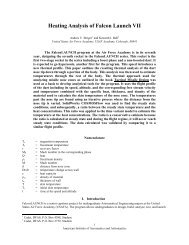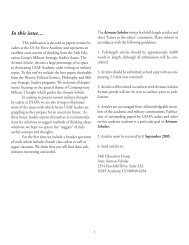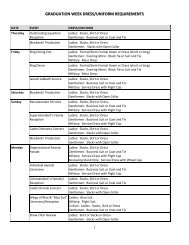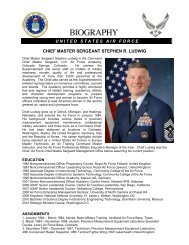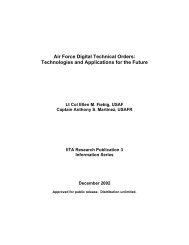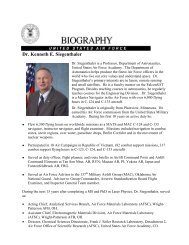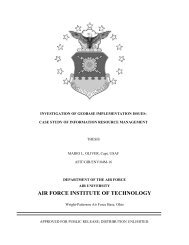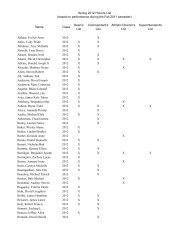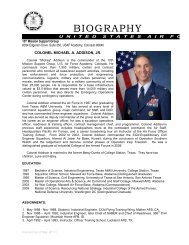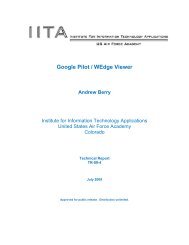the rollback of south africa's biological warfare program
the rollback of south africa's biological warfare program
the rollback of south africa's biological warfare program
You also want an ePaper? Increase the reach of your titles
YUMPU automatically turns print PDFs into web optimized ePapers that Google loves.
Convention (BWC).<br />
According to former South African leaders and generals, NBC <strong>program</strong>s<br />
were developed with <strong>the</strong> intention <strong>of</strong> “countering <strong>the</strong> communist onslaught.”<br />
General (retired) Georg Meiring, former SADF Chief <strong>of</strong> Staff, commented that<br />
SADF sought protection against BW in <strong>the</strong> 1970s, as <strong>biological</strong> weapons<br />
became known as <strong>the</strong> “poor man’s atomic bomb” and as <strong>the</strong> possibility <strong>of</strong> BW<br />
by Soviet-trained SWAPO and ANC/MK guerrillas increased. 33 According to<br />
Magnus Malan (SADF Chief <strong>of</strong> Staff, 1975-80 and Defense Minister, 1980-<br />
91), <strong>the</strong> U.S. encouraged <strong>the</strong> SADF to enter Angola in October 1975, and <strong>the</strong>n<br />
abandoned South Africa to face Cuban forces alone. 34 In addition, South<br />
Africa faced <strong>the</strong> Soviet and Cuban NBC threat alone. In response, P.W. Botha<br />
and Malan proceeded to approve a new and more sophisticated CBW <strong>program</strong><br />
and acceleration <strong>of</strong> <strong>the</strong> nuclear weapons <strong>program</strong>. According to Gen. (ret) Bill<br />
Sass, former State Security Council member and SADF Chief <strong>of</strong> Operations, 35<br />
he believed that <strong>the</strong> nuclear weapons <strong>program</strong> was developed to induce a<br />
Soviet nuclear threat that would attract <strong>the</strong> attention <strong>of</strong> <strong>the</strong> U.S. and <strong>the</strong> West.<br />
If South Africa faced a major communist onslaught, South Africa would target<br />
a major African city, like Luanda, in <strong>the</strong> hope <strong>of</strong> drawing in <strong>the</strong> U.S and <strong>the</strong><br />
West. Similarly, Malan, Meiring and o<strong>the</strong>rs claimed that <strong>the</strong> CBW <strong>program</strong><br />
was intended to counter <strong>the</strong> Soviets and Cubans and ANC and SWAPO<br />
guerrilla groups, who might have used CBW in <strong>the</strong> 1970s and 1980s. 36<br />
However, such contentions remain open to question, until documents from <strong>the</strong><br />
1970s prove <strong>the</strong>se perceptions actually existed.<br />
“Total Onslaught” and Project Coast: Protests and Violence in South<br />
Africa Fuel Support for Expanded CBW Program<br />
In 1976, <strong>the</strong> Soweto uprisings began, bringing a wave <strong>of</strong> unrest to South<br />
Africa, after more than a decade <strong>of</strong> relative calm. The 1976 wave <strong>of</strong> rebellion<br />
continued into 1977, and unrest would persist until 1984, when an even greater<br />
uprising commenced and lasted for more than two years and reverberated until<br />
13




